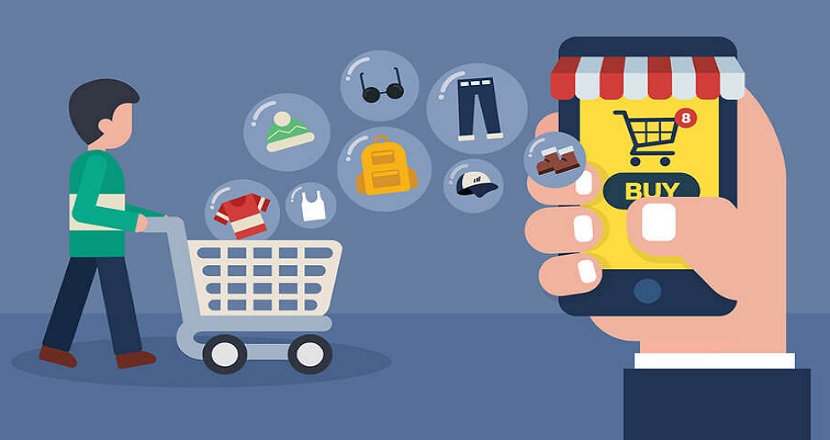Online shopping has become a popular and convenient way to buy products and services from the comfort of your home. However, online shopping also comes with some challenges and limitations, such as lack of physical interaction, product uncertainty and security concerns. How can you overcome these challenges and make your online shopping experience more enjoyable and satisfying? In this blog post, we will share with you six effective ways to enhance your online shopping experience, from personalizing your online store to using augmented reality and virtual reality. These effective ways will help you increase your customer loyalty, average order value and conversion rate. As well as reduce your abandoned carts and bounce rate. Read on to find out more!
What are some security concerns in online shopping?
Security concerns in online shopping primarily revolve around the protection of personal and financial information from unauthorized access, theft or fraud. Shoppers and businesses alike face challenges such as identity theft, phishing attacks and data breaches. Which can lead to financial losses and damage to reputation. Ensuring secure transactions, employing strong data encryption and maintaining up-to-date security measures are crucial to mitigating these risks and safeguarding the trust and confidence of online consumers.

Some of the security concerns in online shopping are:
- Identity theft: Cybercriminals can hack into e-commerce websites and steal users’ login credentials or credit card details. They can use this information to make fraudulent purchases or sell it to other criminals online.
- Fake online stores: Scammers may set up fake websites that look like genuine retailers, but offer low-quality or counterfeit products or nothing at all. They may also try to collect users’ personal or financial information for malicious purposes.
- Unencrypted data: Some websites do not encrypt data, which means they are vulnerable to attacks. If users share sensitive information, such as credit card details, on these websites, hackers may intercept and misuse it.
- Data breaches: Even if a website is secure, there is a risk that hackers may gain unauthorized access to its database and expose users’ personal or financial information in the event of a data breach.
- Fake reviews: Some online reviews may not be genuine, but written by paid reviewers or bots to influence users’ purchase decisions. Users may end up buying products that do not match their expectations or quality standards.
- Fake apps: Some cybercriminals may create fake apps that mimic genuine online retailers, but are designed to harvest users’ personal or financial information, or infect their devices with malware.
- Unsecured Wi-Fi: If users shop online using public or unsecured Wi-Fi networks, there is a risk that hackers may intercept their online activity and steal their personal or financial information.
These are some of the security concerns in online shopping that users should be aware of and take precautions against. I hope this answer was helpful and informative.
How to personalize your online store and increase customer loyalty?
Personalizing your online store is a way of creating a unique and memorable shopping experience for your customers. By tailoring your products, offers, recommendations, and content to their preferences, needs and behavior, you can make them feel valued and understood. This can lead to increased customer loyalty, retention and satisfaction, as well as higher conversion rates and sales. In today’s competitive e-commerce market, personalization is a key strategy to stand out from the crowd and build lasting relationships with your customers.
Personalization means delivering relevant and customized products, services and content to each individual shopper, based on their profile, preferences and behavior. By personalizing your online store, you can create a unique and memorable shopping experience that makes your customers feel valued and understood. This can result in higher customer loyalty, retention and satisfaction, as well as increased conversion rates and sales. Personalization is not only beneficial for your customers, but also for online business.
6 Effective ways to increase online shopping experience
Online shopping is a convenient and popular way of buying products and services, but it can also pose some challenges and frustrations for customers.
To improve your online shopping experience, you can try these six effective ways:
-
Compare prices and reviews
Compare prices and reviews from different websites and platforms before making a purchase.If you are looking for the best value and quality when shopping online, you should always compare prices and reviews from different websites and platforms before making a purchase. This can help you save money, avoid scams and find the most suitable products or services for your needs. By comparing prices and reviews, you can also learn more about the features, benefits and drawbacks of various options. Make an informed & solid decision based on your preferences and budget. This can help you find the best deals and quality for your needs.
-
Use secure and reliable payment methods
Use secure and reliable payment methods that protect your personal and financial information. Avoid using public Wi-Fi or computers to make online transactions, and check the website’s security certificates and policies. When you shop online, you want to make sure that your payment information is safe and secure. There are many ways to pay online, but some are more reliable and trustworthy than others. To avoid fraud and identity theft, you should use secure and reliable payment methods that protect your personal and financial data.

Some examples of secure online payment methods are:
- Credit cards: Credit cards offer online security features like encryption, fraud monitoring, and zero fraud liability. They also limit your legal liability for fraudulent charges to $50 or less, thanks to the Fair Credit Billing Act (FCBA).
- Digital wallets: Digital wallets like PayPal, Apple Pay or Google Pay let you store your payment information in a secure app or website, and pay with just a few clicks or taps. They also offer buyer protection and dispute resolution services.
- ACH payments: ACH payments allow you to transfer funds directly from your bank account to another bank account. They use encryption and access controls to safeguard your banking information. They also have low fees and fast processing times.
- Payment tokenization: Payment tokenization replaces your sensitive payment data with a unique and random string of numbers, called a token. This way, your actual payment information is never exposed or stored by the merchant or the payment processor.
- Cryptocurrency: Cryptocurrency is a digital currency that uses cryptography to secure and verify transactions. It operates on a decentralized network, meaning no central authority or intermediary controls it. It also offers anonymity and transparency.
By using these secure and reliable payment methods, you can shop online with confidence and peace of mind. In the next section, we will show you how to choose the best payment method for your online shopping needs.
-
Read the product descriptions and specifications carefully
Read the product descriptions and specifications carefully to avoid any misunderstandings or disappointments. One of the most important steps in online shopping is to read the product descriptions and specifications carefully. These are the texts that provide you with essential information about the product, such as its features, benefits, dimensions, materials, compatibility, warranty and more. By reading the product descriptions and specifications carefully, you can avoid buying the wrong product, wasting your time and money or missing out on a better deal. You can also learn how to use the product properly, how to care for it, and what to expect from it. Reading the product descriptions and specifications can also help you compare different products and find the best one for your needs and preferences.
To read the product descriptions and specifications effectively, you should:
-
- Look for keywords that match your search criteria and needs. For example, if you are looking for a laptop, you might look for keywords like processor, memory, battery life, screen size and weight etc.
- Use headlines, bulleted lists and tables to scan the information quickly and easily. These are usually the most important and relevant parts of the product description and specification.
- Read the fine print and look for any hidden fees, charges, conditions, or limitations. For example, some products might have additional shipping costs, taxes, or delivery times that are not included in the price.
- Check the reviews and ratings from other customers who have bought and used the product. These can give you an idea of the quality, performance, and reliability of the product, as well as any issues or problems that might arise.
- Ask questions if you have any doubts or need more clarification. You can contact the seller or the manufacturer directly, or use the customer service or chat features on the website. You can also look for FAQs or forums where you can find answers from other users or experts.
-
Check the shipping and delivery options and costs
Shipping and delivery are important factors to consider when you shop online. Check the shipping and delivery options and costs before placing an order. Choose the most suitable and affordable option for your location and urgency. Different websites and platforms may offer different options and costs for shipping and delivery, depending on the product, the seller and the destination. Before you place an order, you should always check the shipping and delivery options and costs. You can use online tools like Online Shipping Calculator to compare shipping rates from multiple carriers, such as UPS, FedEx, USPS and Sendle. You can also check the estimated time and cost of delivery from the website or platform you are buying from, such as FedEx or UPS.
Track your order and contact the seller or customer service if you encounter any delays or issues. You can use the tracking number or code provided by the seller or the carrier to track your order status and location. You can also use the customer service or chat features on the website or platform to report any problems or request any changes. By checking the shipping and delivery options and costs, you can save money, time and hassle when you shop online for your needs.
-
Provide honest and helpful feedback
Provide honest and helpful feedback after receiving your order. Rate and review the products and services you bought, and share your experience with other customers. This can help improve the online shopping community and quality.
Sincere and constructive feedback following a purchase is a crucial practice that benefits the entire online shopping community. By taking the time to rate and review the products and services you have utilized, you contribute valuable insights that aid in enhancing the quality and reliability of online offerings. Such reviews serve as a guide for future customers, helping them make informed decisions, and also provide businesses with direct consumer insights, allowing them to address issues and improve their offerings.
Customer Feedback Example
“”I ordered a pair of headphones from this website and I am very satisfied with my purchase. The headphones arrived on time and in good condition. They have a great sound quality and are comfortable to wear. The customer service was also very helpful and responsive. I would recommend this website to anyone looking for quality headphones at a reasonable price. This was a positive online shopping experience for me.””
-
Take advantage of discounts, coupons and rewards programs
Online shopping can be a great way to find the best deals and enjoy the convenience of shopping from home. You can also save more money and get more benefits by taking advantage of discounts and rewards programs offered by online stores and brands. Take advantage of discounts, coupons and rewards programs that can save you money and offer you benefits. By subscribing to newsletters, you can get access to exclusive offers, discounts and free shipping. Following social media accounts, you can stay updated on the latest products, sales and giveaways. By joining loyalty programs, you can earn points, cashback or free gifts for every purchase you make. These are some of the ways you can make the most of your online shopping experience.
These are some of the ways to enhance your online shopping experience and increase your customer satisfaction and loyalty. I hope you find them useful and interesting.
What are some common online shopping scams?
Online shopping scams are fraudulent schemes that deceive consumers into buying products or services that are never delivered, or are of poor quality. Scammers often use fake websites, social media ads or phishing emails to lure customers. Online shopping scams can result in financial losses, identity theft or malware infections
Some common online shopping scams are:
- Fake stores that mimic trusted brands or offer extremely low prices, but never deliver the products or send poor-quality knockoffs.
- Impostors that pretend to be from reputable organizations, such as health agencies, charities, or government agencies and ask for personal or financial information.
- Phishing messages that lure you to click on malicious links or attachments that can infect your device with malware or steal your identity.
- Payment fraud that involves using unsecure or unreliable payment methods, such as wire transfers, gift cards, or cryptocurrency, that offer no protection or recourse in case of a dispute.
To avoid these scams, you should always be careful and vigilant when shopping online.
Here are some tips to help you stay safe:
- Compare prices and reviews from different websites and platforms before making a purchase. If a deal seems too good to be true, it probably is.
- Use secure and reliable payment methods that protect your personal and financial information. Avoid using public Wi-Fi or computers to make online transactions, and check the website’s security certificates and policies.
- Read the product descriptions and specifications carefully to avoid any misunderstandings or disappointments. Pay attention to the size, colour, material, features, and warranty of the products you are buying.
- Check the shipping and delivery options and costs before placing an order. Choose the most suitable and affordable option for your location and urgency. Track your order and contact the seller or customer service if you encounter any delays or issues.
- Provide honest and helpful feedback after receiving your order. Rate and review the products and services you bought, and share your experience with other customers. This can help improve the online shopping community and quality.
- Take advantage of discounts, coupons, and rewards programs that can save you money and offer you benefits. Subscribe to newsletters, follow social media accounts, and join loyalty programs of your favorite online stores and brands.
- Be suspicious of pressure tactics that urge you to buy right away or claim limited availability or stock. Scammers often use these tricks to make you act impulsively and ignore warning signs.

- Be wary of social media ads that may take you to an unfamiliar shopping site or a social media-based store. Some of these ads may be fraudulent or misleading, and the products may not match the description or quality.
- Report any suspicious or fraudulent activity to the relevant authorities, such as the FTC, BBB, or your bank or credit card company. This can help stop the scammers and prevent others from falling victim to them.
How can I check the reputation of an online store?
Reputation of an online store is the public opinion of the Internet community about your store or brand. It is expressed in various ways, such as product reviews, seller feedback, social media comments and customer forums. Reputation of an online store can affect customer trust, loyalty and revenue
There are several ways to check the reputation of an online store before making a purchase. Here are some tips to help you:
- Look for a padlock icon or a green address bar in your browser when you visit the website. This indicates that the website is secure and encrypts your information.
- Check the contact information of the website, such as the physical address, phone number and email. Try to call or email the business and see if they respond professionally.
- Read the product descriptions, shipping and return policies and terms and conditions carefully. Make sure you understand what you are buying and what your rights and responsibilities are.
- Compare the prices and reviews of the products from different websites and platforms. Look for customer feedback, ratings and testimonials on the website and on social media.
- Use a free online tool to check the website’s trustworthiness, popularity and blocklist status. For example, you can use Scamvoid, Google Transparency Report or McAfee WebAdvisor to check if a website is safe or a scam.
- Avoid using unsecure or unreliable payment methods, such as wire transfers, gift cards or cryptocurrency. Use a credit card, PayPal or other trusted services that offer protection and recourse in case of a dispute.
- Be wary of pressure tactics, social media ads and too good to be true offers. Scammers often use these tricks to make you act impulsively and ignore warning signs.
By following these tips, you can shop online safely and avoid falling victim to online shopping scams.
Why is the retail shopping experience important?
The importance of the retail shopping experience cannot be overstated, acting as the cornerstone for achieving enduring success in the retail sector. It forms the basis of a customer’s perception of a brand, influencing not only their loyalty and repeat business but also the likelihood of recommending the brand to others. In an era where consumers are exceptionally well-informed thanks to the internet, providing an outstanding shopping experience becomes crucial for retailers to differentiate themselves.
Gone are the days when retail associates were the gatekeepers of product information. Now, their role has evolved to focus more on enriching the customer experience rather than merely pushing sales. This shift underscores the need for retailers to offer memorable, positive experiences that resonate with customers, ensuring they not only return but also become advocates for the brand.
Final Thoughts
This article sheds light on the essential strategies to enhance the online shopping experience. Emphasizing the significance of comparing prices, utilizing secure payment methods, meticulously reading product details and taking advantage of discounts and rewards. It also highlights the critical role of providing honest feedback and staying vigilant against common online scams. Ensuring a safer and more satisfying shopping journey.
By adopting these practices, consumers can navigate the digital marketplace with confidence. Making informed decisions that lead to better purchase outcomes and a more enjoyable shopping experience. On the other hand, retailers are reminded of the importance of creating a memorable retail experience that leverages technology and personalization to meet the evolved expectations of today’s informed and discerning shoppers.





Leave a Reply